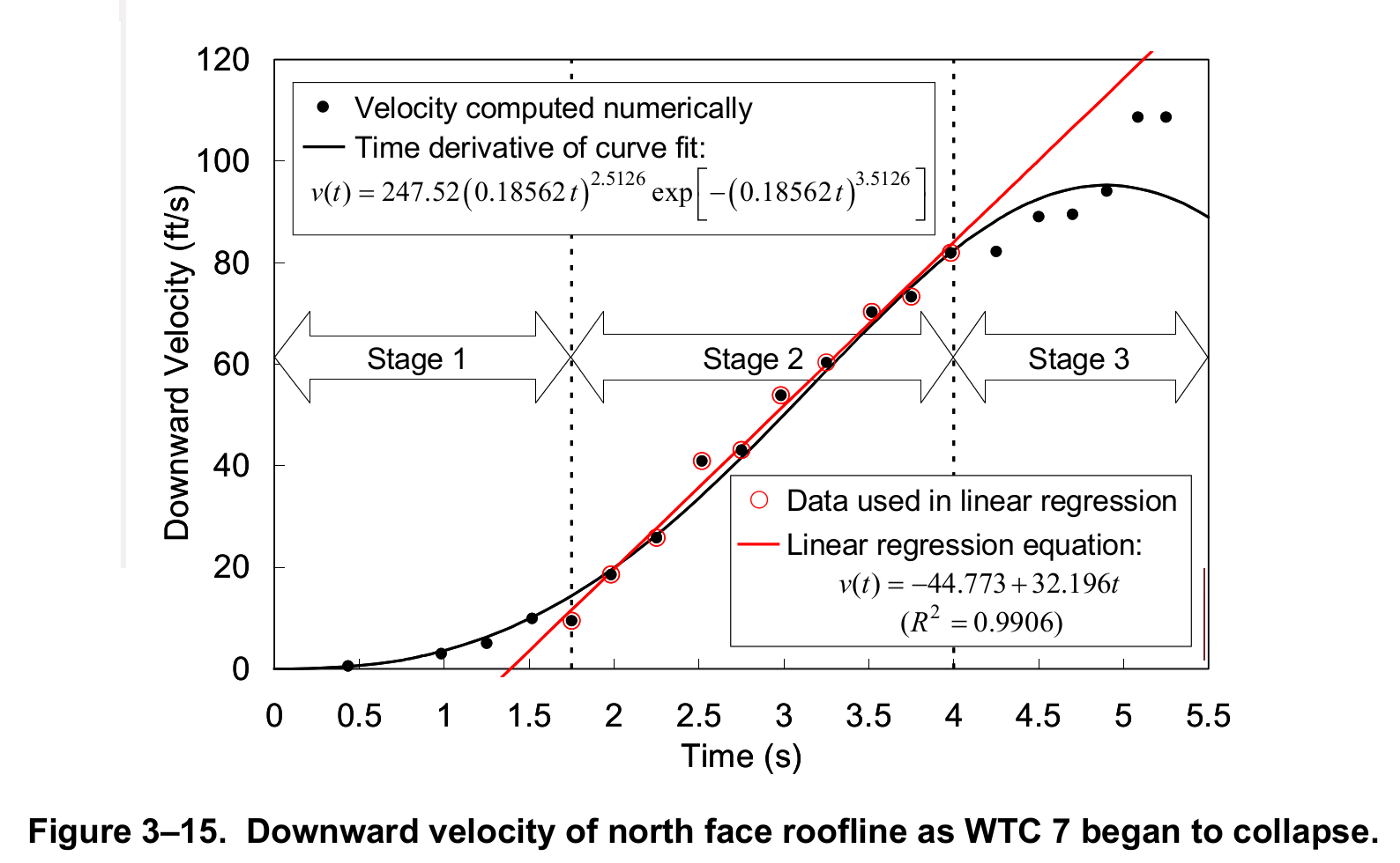Here's the video. Relevant part ...
Relevant for what?
Comparing this specific Verinage demolition, of a not-so-tall concrete building, with the non-demolition of very tall steel-frame buildings is irrelevant from the get go.
They are different.
So what?
Did anyone expect them to be same?
You repeat, as allegedly relevant, the quirk that during the Verinage collapse, there is a brief moment of net deceleration - that is exactly what I told you: That's on purpose - direct the kinetic energy of the falling mass as squarely onto the columns below to get as much destruction as quickly as possible.
Since nothing was directed in the WTC collapses, since nothing impacted any columns to any significant degree, this did not happen at the WTC (at least not before sub-assemblies started hitting the ground).
Which neither means this was demolition, nor that it wasn't demolition.
It's just different accelerations, because the collapses were different and the structures were different.
So discussing the detailed motion of some concrete building Verinage demolition is and remains to be IRRELEVANT to what happened at the WTC.
-----------
[EDITED TO ADD:]
An apology to you - I asked you present the Chandler video with the Verinage measurments, you provided it, and I should thank you for it - thank you!
Looking at it, and the "-8.5 m/s/s" value, look what I found at 2 minutes 52 seconds:

This value is the AVERAGE over an arbitrarily chosen interval of 0.8 s.
It seems to vary within that interval: Between 1.8 s and 2.0 s, velocity changes from -3.3 m/s to -5.6 m/s, that's an acceleration of -11.5 m/s/s - higher than free fall acceleration!
The average acceleration is dependent on the interval you pick. For example:
- From 1.6 s to 2.2 s (0.6 s interval), v changes from -1.65 m/s to -6.9 m/s for an average acceleration of -8.75 m/s/s
- From 1.4 s to 2.0 s (0.6 s interval), v changes from -0.34 m/s to -5.6 m/s for an average acceleration of -8.77 m/s/s
- From 1.6 s to 2.0 s (0.4 s interval), v changes from -1.65 m/s to -5.6 m/s for an average acceleration of -9.875 m/s/s - whoa - that's freefall acceleration right there!!
The truth is of course that at no point is any part of the structure actually in free fall. Column resistance at one level went from 100% to 0% in a short but non-zero interval (in this case: initiated by hydraulic jacks), but whatever bit of the structure Chandler measured remained attached directly or indirectly to other columns, floor sections, etc.
(In the case of WTC, when the West core collapse, it no doubt progressed horizontally to the perimeter columns horizontally, by floor girders pulling or pushing, and then vertical resistance of the North wall columns in some portion of the wall dropped from 100% to 0% in a short but non-zero time interval. As most of the North wall columns did not go all the way to the ground but instead were cantilevered on transfer girders on the 8th floor, and that rapid column failure most likely occurred below the 8th floor, once the wall dropped, it dropped 8 floors essentially with no column resistance, which is why we saw that period of around free fall acceleration occur over 8 floors. And a brief bit within that interval even HIGHER acceleration than 9.8 m/s/s - because that is what happens when a horizontal girder is resisted on one end - the core end - only: The other end experiences >g acceleration. What I picture there is that the north wall was still connected via floor girders to core columns; the core columns went first and made the girders tug the wall below 8th floor inward, causing it to fail rapidly and send the wall down; then the falling core columns ran into the ground, an action transferred to the wall above the 8th floor via still connected girders, causing a brief >g episode. As a result, the entire 2.25 s / 8 floor interval AVERAGED about g.
Does the NIST full collapse model bear this sequence out? -> I don't know and I don't care. It's not going to be accurate this late into the collapse anyway. Chaos and all that.)

